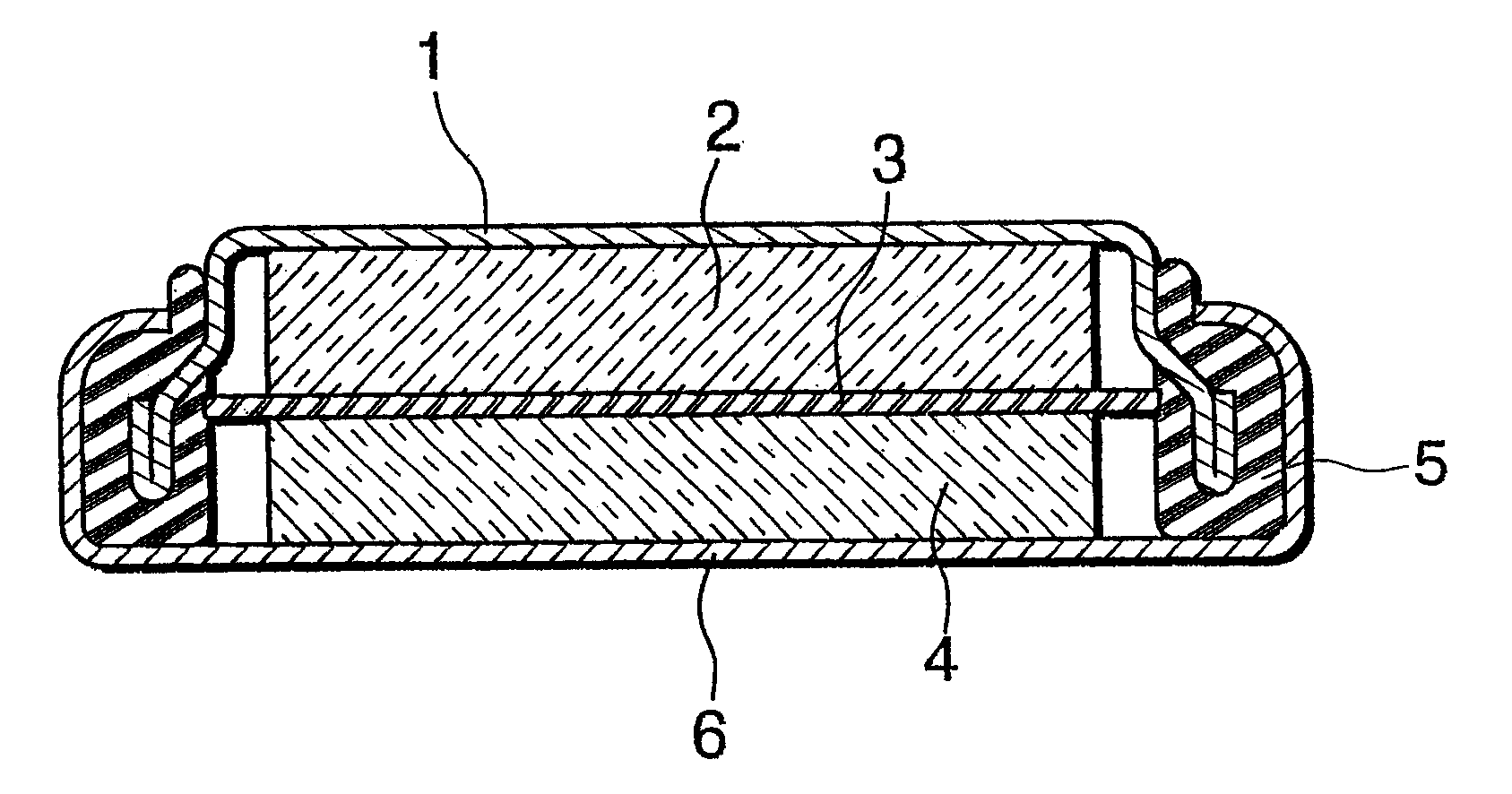Method of producing an electrode for non-aqueous electrolyte battery
a non-aqueous electrolyte battery and electrode technology, applied in the manufacture of electrodes, cell components, impregnation manufacturing, etc., can solve the problems of reducing the charge/discharge capacity of the battery, failing to provide a disclosure on the environment for preserving the active material of the electrode, and unable to meet the needs of reducing size and weight, etc., to achieve the effect of reducing the effect of moisture and reducing the capacity
- Summary
- Abstract
- Description
- Claims
- Application Information
AI Technical Summary
Benefits of technology
Problems solved by technology
Method used
Image
Examples
example 1
Nickel nitrate and cobalt nitrate were mixed in an aqueous solution in a ratio of Ni / Co (molar ratio)=0.8 / 0.2 to form a precipitate, which was dried by a spray dryer to yield approximately spherical particles. These particles and lithium hydroxide were mixed in a ratio of Li / Ni / Co (molar ratio)=1 / 0.8 / 0.2, and the resultant mixture was calcined. The obtained particles were immediately preserved in an air having a moisture dew point of -50.degree. C. at an ordinary temperature for a week.
This lithium composite oxide LiNi.sub.0.8 CO.sub.0.2 O.sub.2 was used as an active material to prepare an electrode mixture-coating material having the following composition of blending.
(Composition of blending)
PVDF (3 parts by weight) was dissolved in NMP (54 parts by weight) to prepare a binder solution (57 parts by weight). The active material (93 parts by weight) and the electrically conductive agent (4 parts by weight) were mixed in dry process by a hypermixer; and the mixture was introduced into...
example 2
Nickel nitrate and cobalt nitrate were mixed in an aqueous solution in a ratio of Ni / Co (molar ratio)=0.8 / 0.2 to form a precipitate, which was dried by a spray dryer to yield approximately spherical particles. These particles and lithium hydroxide were mixed in a ratio of Li / Ni / Co (molar ratio)=1 / 0.8 / 0.2, and the resultant mixture was calcined. The obtained particles were left to stand in air for 24 hours and then subjected to vacuum drying in an environment of 0.01 Torr and 200.degree. C. by a vacuum dryer for 24 hours.
This lithium composite oxide was used as an active material to prepare an electrode mixture-coating material in the same manner as in Example 1 to produce an electrode of Example 2.
example 3
Nickel nitrate and cobalt nitrate were mixed in an aqueous solution in a ratio of Ni / Co (molar ratio)=0.8 / 0.2 to form a precipitate, which was dried by a spray dryer to yield approximately spherical particles. These particles and lithium hydroxide were mixed in a ratio of Li / Ni / Co (molar ratio)=1 / 0.8 / 0.2,and the resultant mixture was calcined. The obtained particles were immediately preserved in an air having a moisture dew point of -50.degree. C. at an ordinary temperature for a week and then subjected to vacuum drying in an environment of 0.01 Torr and 200.degree. C. by a vacuum dryer for 24 hours.
This lithium composite oxide was used as an active material to prepare an electrode mixture-coating material in the same manner as in Example 1 to produce an electrode of Example 3.
PUM
 Login to View More
Login to View More Abstract
Description
Claims
Application Information
 Login to View More
Login to View More - R&D
- Intellectual Property
- Life Sciences
- Materials
- Tech Scout
- Unparalleled Data Quality
- Higher Quality Content
- 60% Fewer Hallucinations
Browse by: Latest US Patents, China's latest patents, Technical Efficacy Thesaurus, Application Domain, Technology Topic, Popular Technical Reports.
© 2025 PatSnap. All rights reserved.Legal|Privacy policy|Modern Slavery Act Transparency Statement|Sitemap|About US| Contact US: help@patsnap.com


